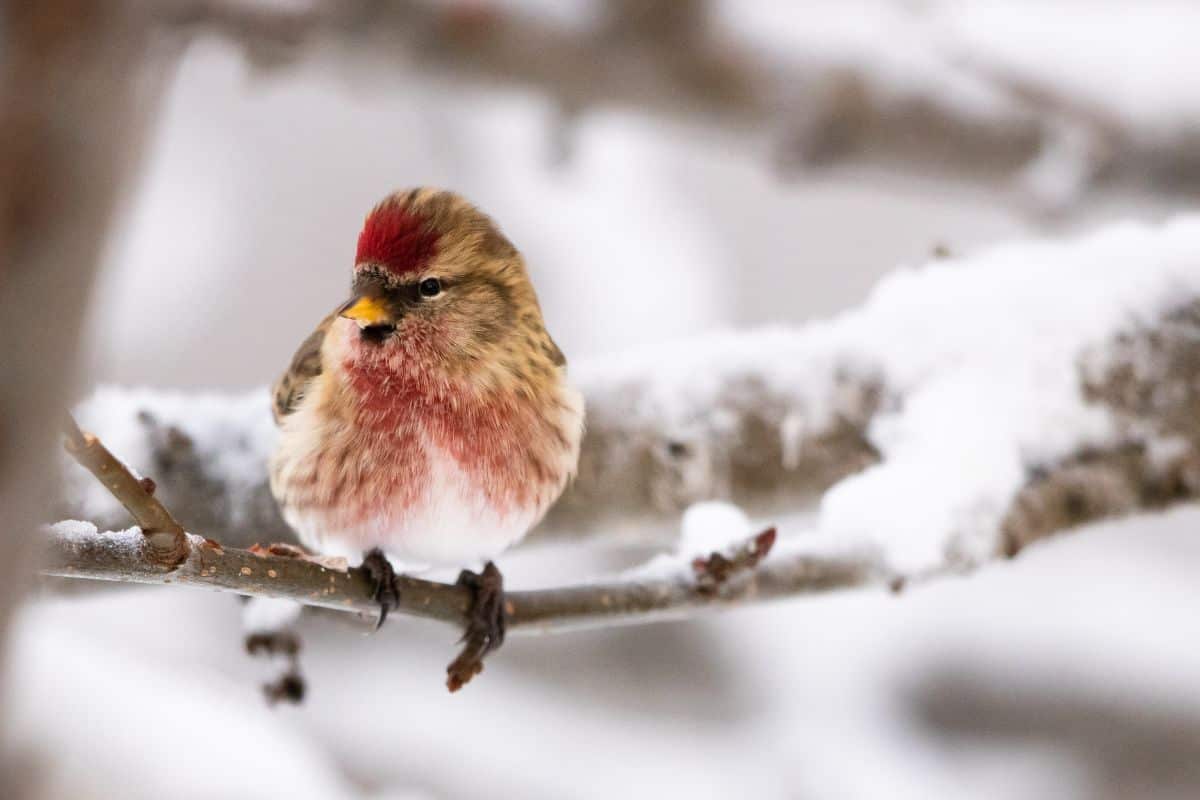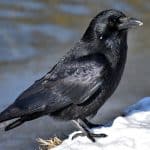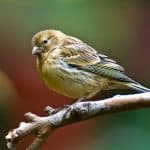Common Name: Common Redpoll
Scientific Name: (Acanthis flammea)| Size | Diet | Range in Hawaii | Status in Hawaii |
|---|---|---|---|
| 4.7 in. - 5.9 in. | seeds, fruits, and insects | Unknown | Least Concern |
The Common Redpoll (Acanthis flammea) is a charming and unique bird species that is known for its distinctive red cap and brownish-gray plumage. With its playful behavior and sweet songs, this finch is a fascinating sight in its natural habitat. Although it is not a native species to Hawaii, Common Redpolls have been spotted occasionally on the islands as non-breeding visitors or vagrants, making for a rare and exciting sighting for birdwatchers.
In this article, we’ll explore the fascinating world of the Common Redpoll and learn more about its unexpected presence in Hawaii.
Common Redpoll
Appearance
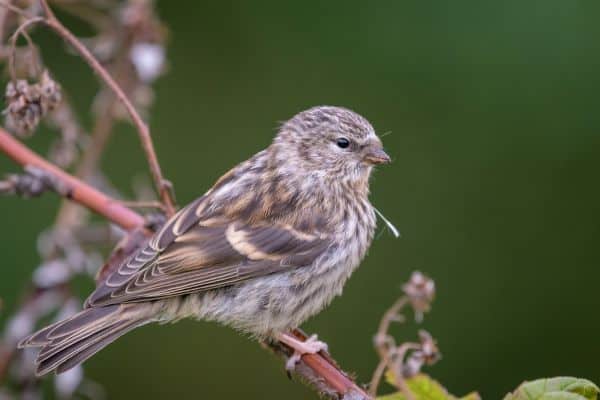
The Common Redpoll is a delightful little bird that captivates with its vibrant appearance. Measuring around 4.7 to 5.9 inches (12 to 15 centimeters) in length, it boasts a petite yet charming stature. Its defining feature is a striking crimson cap that adorns the crown of its head, contrasting beautifully against a soft grayish-brown body.
The red cap extends down to its forehead, accentuating its endearing facial expression. To complement its colorful cap, the Common Redpoll displays a black chin and bib, adding a touch of elegance to its overall appearance. Not to be outdone, its wings and tail showcase a subtle pattern of black streaks, while its underparts feature a delicate pinkish hue.
Diet
These charming finches have a penchant for feasting on seeds, particularly those from various types of birch trees. With their specialized beaks designed for extracting seeds, they skillfully navigate the slender branches, plucking out the tiny morsels hidden within birch catkins.
Common Redpolls also have a fondness for other tree and shrub seeds, including alder, spruce, and pine. Additionally, they occasionally supplement their diet with small insects and berries, adding a touch of variety to their meals.
Nesting
These resourceful birds construct their nests in a variety of locations, including dense shrubs, small trees, and even on the ground. Their nests are carefully woven with a combination of grasses, twigs, moss, and plant fibers, providing a cozy and well-insulated home for their offspring.
What makes their nesting behavior truly intriguing is their ability to camouflage their nests with lichens and other materials found in their surroundings. This clever adaptation helps the nests blend seamlessly into the environment, providing an added layer of protection against potential predators.
During the breeding season, female Common Redpolls lay a clutch of 3 to 7 eggs, which are pale bluish-green in color and speckled with darker markings. Both the male and female take turns incubating the eggs, showcasing their shared parental responsibilities. After a couple of weeks, the eggs hatch, and the diligent parents tirelessly forage for insects and seeds to feed their hungry nestlings.
Behavior
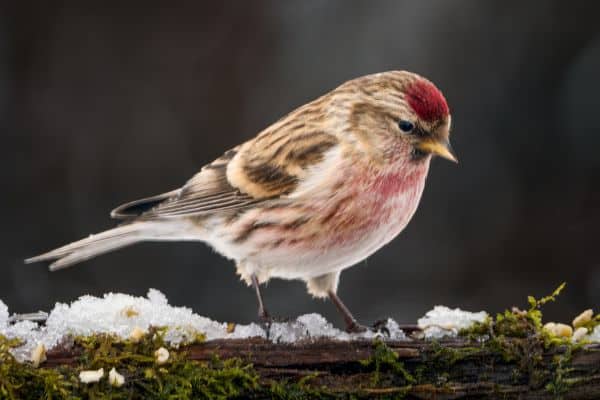
These lively finches are known for their social nature and often gather in flocks, creating a vibrant and energetic atmosphere. Observing their behavior reveals a myriad of fascinating traits.
One remarkable behavior of the Common Redpoll is their acrobatic feeding style. With their agile movements, they hang upside down from slender branches, skillfully extracting seeds from cones and catkins. Their dexterity and determination are a sight to behold, as they navigate the treetops with ease.
Another interesting behavior is their vocalization. Common Redpolls communicate with a variety of melodious chirps, trills, and warbles. Their calls are often heard during flock interactions, as they establish hierarchies and maintain social cohesion within their groups. These lively vocalizations add a cheerful and musical ambiance to their surroundings.
During the breeding season, male Common Redpolls engage in spirited displays to attract mates. They puff up their feathers, revealing their vibrant red caps, and perform energetic flights, showcasing their agility and vigor. These courtship rituals are a visual spectacle, emphasizing the males’ determination to secure a partner.
Common Redpolls also exhibit a remarkable adaptability to changing environments. They are known for their nomadic tendencies, moving in search of food sources and suitable nesting sites. This ability to adjust their behavior and adapt to various habitats contributes to their widespread distribution across northern regions.
Habitat
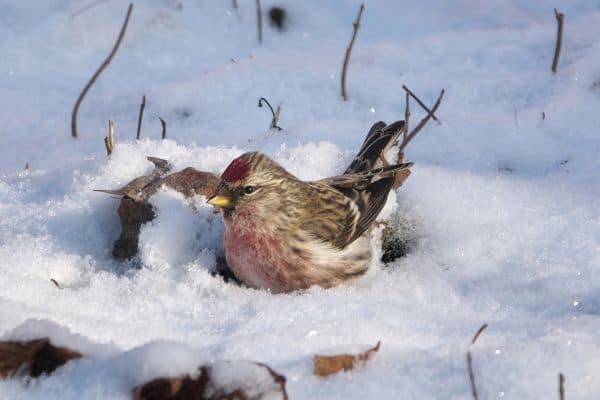
The Common Redpoll is a versatile bird that can be found in various habitats, including boreal forests, tundra regions, and even suburban areas. They adapt to their surroundings, utilizing dense vegetation for shelter, while relying on seeds from trees and plants as their primary food source.
Range
The Common Redpoll is primarily found in northern latitudes of North America and Asia. However, it has been documented as a non-breeding visitor and occasional vagrant in the Northwestern Hawaiian Islands. This suggests a potential colonization and evolutionary connection between Carduline finches and the Drepanini group in Hawaii.
Conservation Status
The conservation status of the Common Redpoll (Acanthis flammea) is currently classified as “Least Concern” by the International Union for Conservation of Nature (IUCN). This designation indicates that the species is not facing immediate threats to its survival.
Interesting Facts
1. Energy-efficient digestion
Common Redpolls have a unique adaptation in their digestive system. They have an enlarged esophagus known as a “crop” where they store seeds temporarily. This allows them to quickly consume a large quantity of seeds and then retreat to a safe location to digest them at their own pace, conserving energy during periods of limited food availability.
2. Human interaction
Common Redpolls readily visit bird feeders, especially during the winter months when food sources are scarce. Their presence brings joy to birdwatchers and provides an opportunity for people to observe and appreciate these beautiful finches up close.
3. Feathered feet
Common Redpolls have evolved to cope with cold environments by developing feathered feet. These feathers provide insulation and help keep their feet warm while perched on icy branches or walking on snowy surfaces.
4. Rapid reproduction
Common Redpolls are known for their high reproductive rate. They have the ability to produce multiple broods in a single breeding season, with each brood typically consisting of several eggs. This adaptability allows their populations to recover quickly after periods of decline.
5. Crossbreeding
Common Redpolls occasionally hybridize with other finch species, such as the Hoary Redpoll (Acanthis hornemanni) and the Lesser Redpoll (Acanthis cabaret). These interbreeding events can result in unique hybrid individuals with mixed characteristics.
Frequently Asked Questions
1. Can Common Redpolls be kept as pets?
In many countries, it is illegal to keep native wild birds like Common Redpolls as pets without the necessary permits and licenses. It is generally best to appreciate these birds in their natural habitat or through observing them at bird feeders.
2. What is the lifespan of a Common Redpoll?
The average lifespan of a Common Redpoll is typically around 2 to 3 years. However, some individuals have been known to live up to 6 or 7 years in the wild, and there have been records of individuals living up to 10 years.
3. Are Common Redpolls known for irruptive migrations?
Yes, Common Redpolls are known to have irruptive migration patterns. This means that their movements and population numbers can vary greatly from year to year, depending on the availability of food sources. In some years, they may migrate further south in large numbers, while in other years, they may remain closer to their breeding grounds.
4. Are Common Redpolls social with other bird species?
Common Redpolls are generally social with their own species and tend to form mixed flocks during migration and winter. However, they may also associate with other small bird species, such as other finches, sparrows, and siskins, especially when foraging or roosting together.
5. Are Common Redpolls considered pests?
Common Redpolls are not typically considered pests. While they may occasionally visit bird feeders in large numbers, their presence is generally seen as a welcome sight for bird enthusiasts. They primarily feed on natural seed sources and have minimal impact on agricultural crops.
